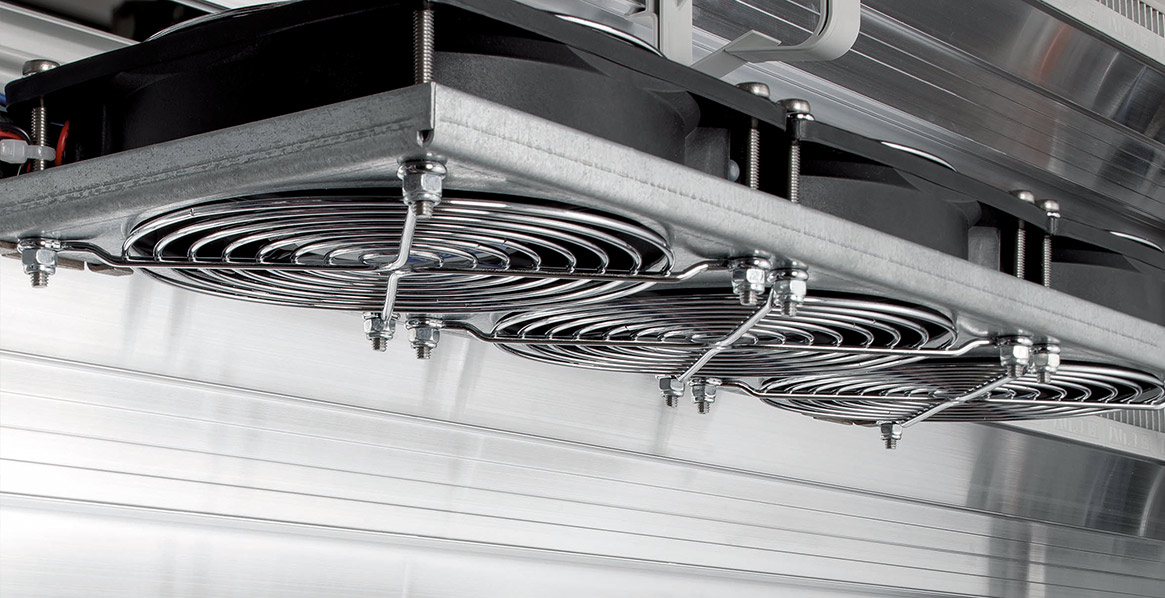
A good climate with seasonal cooling
Climate-friendly control cabinet planning – is it possible to operate a control cabinet all year round energy-efficiently, without risking thermally-induced failures?
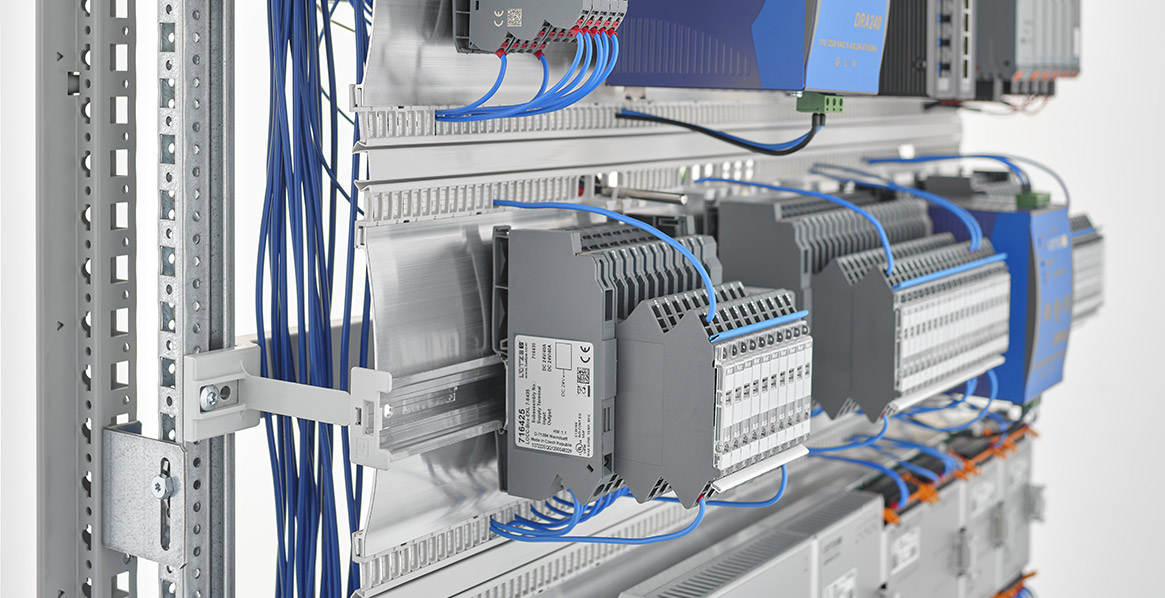
Control cabinets with electrical components are widely used in industrial environments. There are many models that are standardized with respect to the components used and application purposes; however, there are also lots of individual configurations. Also, the temperature distribution itself may vary, even in control cabinets that appear to have identical components. In this specific case, the clocking time of the controlled process determines the thermal loss output released in a control cabinet. Also, factors, such as the position of a component, can also have a huge impact on the individual temperature to which the product is exposed. There is no one universal and energy-efficient cooling mechanism that ensures smooth operation for all applications and eventualities. Therefore, it is essential to think about the climate in the control cabinet during the planning phase. Mistakes made here will impact on the entire lifecycle of the system, and are difficult and expensive to remedy later.
Within the scope of their long-standing cooperation agreement, Friedrich Lütze GmbH and the Institute for Building Energy, Thermal Engineering and Energy Storage (IGTE) of the University of Stuttgart, are working on a needs-based and environmentally-friendly cooling concept for control cabinets. Today, there is a demand for more energy efficiency in the industry, and also in control cabinets. Also, other requirements, such as the prevention of thermally-induced failures, are becoming more and more important for system operators. Thanks to digital transformation and the associated interlinking of all production steps, even the malfunction of the control cabinet can have serious consequences. In addition, there is more political and public pressure to reduce emissions in every production step. The comprehensive calculation of the CO2 footprint of an industrial product also includes those emissions generated during production. The following frequent yet largely neglected example shows how a seasonal and needs-based cooling concept can lead to a reduction in energy consumption and emissions.
The focus of most climate considerations in the control cabinet sector is on individual cabinets However, in reality, combinations of control cabinets without separating inner partitions are just as common as individual cabinets. From a thermodynamic aspect, the installation position and spatial separation of a control cabinet have a huge impact on its climate. Looking at conventional control cabinet combinations, active cooling systems are frequently only mounted in to every second or third control cabinet (air conditioning unit or heat exchanger). If we only examine e.g. loss output per cabinet and the maximum useful cooling output, operation of the cabinets appears possible. However, in reality things are very different. The following practical example shows which energy-saving potential often goes untapped.
If several control cabinets share an active cooling system (air conditioning unit or heat exchanger), there is often a distribution problem. This can be clearly demonstrated in a CFD simulation. Figure 1 shows the temperature distribution in a control cabinet combination, comprising two control cabinets, without inner partitions. Both control cabinets are designed with the duct-free Airstream wiring system by Lütze. The cabinet on the right has active cooling, the one on the left doesn't. The initial situation is shown at the top of Figure 1. The left cabinet is operated with free cooling, which means that there is very little air circulation due to the thermal lift. The CFD simulation clearly shows that no cold air reaches the cabinet on the left and there are numerous hotspots in the upper area. In contrast, the thermal situation in the actively cooled cabinet on the right is harmless because it receives adequate cooling. If, in this configuration, the cabinet on the left needs to be cooled adequately, the cooling output would need to be increased significantly. In this case, the air temperature in the actively cooled cabinet would drop considerably and there would be a risk of condensation forming due to the large temperature differences. The better solution would be to improve the distribution of the cold air between the cabinets. The lower part of Figure 1 shows how this can be achieved. In this optimized state, there is an Airblower in each cabinet (circulation fan of the Airstream wiring system) that can generate a targeted circulation flow around the wiring frame. This means that a comparably low cooling output is required in the cabinet on the right. By breaking down the temperature stratification and the much higher air circulation rates, the climate in both cabinets is improved and the hotspots in the previously precarious cabinet on the left are dissipated. And all this, even though an Airblower in normal mode only requires 15 W. One special aspect here is that the Airblower control unit has an extra potential-free output that can control the individually deployed active cooling unit (e.g. air conditioning unit or heat exchanger). Several Pt100s can record temperatures in the cabinet and use these as standard variables.
Non-optimized state (free cooling)
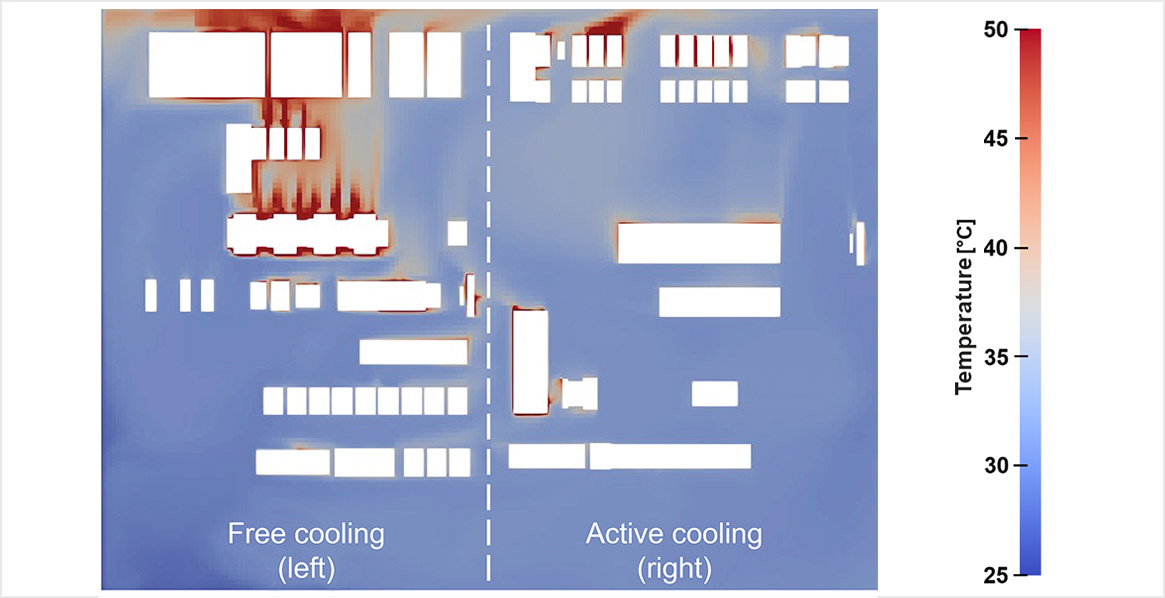
Optimized state (with AirBLOWER)
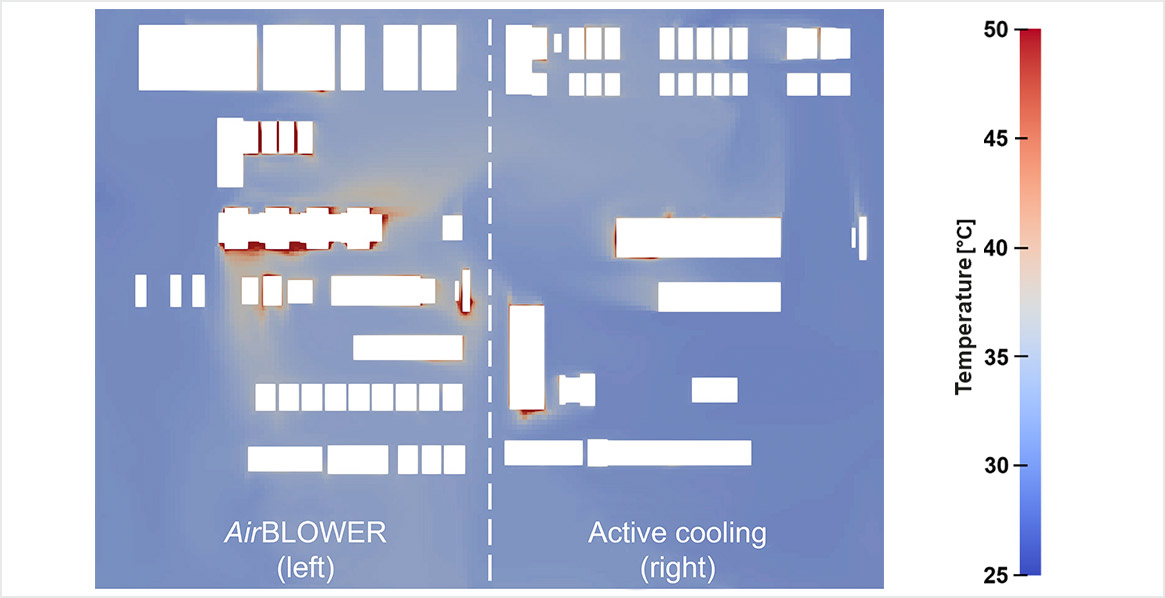
The energy-related benefit of this cooling concept can be illustrated by assessing an entire production year. The temperature in a production hall is subject to large seasonal fluctuations. The fluctuation levels depend on the individual situation. Based on past experience, a typical temperature range of between 20 °C and 35 °C has been assumed for the following example. This temperature range is distributed over the entire year according to the monthly average values in Germany for the year 2020 (Source: DWD). Figure 2 shows the temperature curves resulting from the model. The previously mentioned weather data (outdoor climate) is shown in black, the hall temperature is shown in orange and the maximum temperature in the control cabinet is shown in red. The examined control cabinet is the one shown in Figure 1. The focus here is on the control cabinet on the left that initially does not have active cooling. A free power loss of 500 W is assumed for this cabinet. A maximum permissible temperature of 40 °C inside the control cabinet was defined as a standard variable. If this temperature is exceeded in the control cabinet, the heat needs to be removed from the control cabinet by means of active cooling. Figure 2 at the top shows the starting situation again at which there is little air movement in the control cabinet. The blue bars show the mean additional cooling needs measured in Watts per month. This cooling output needs to be fed to the control cabinet on average every month to reach the stipulated temperature of 40 °C. It is clear that additional cooling is required from April to November. According to the temperature curve, the maximum in the hall is reached in August. The temperatures in the control cabinet in those months in which no active cooling is applied are close to 40 °C. We know from the CFD simulation that there is also significant temperature stratification. In contrast, if we look at the case where an Airblower is used, as shown at the bottom of Figure 2, it is clear that a significant improvement can be achieved with respect to the energy required for cooling. Here, additional cooling is only required in the months June to September. The amount of required cooling output is also reduced significantly. In August, in which the maximum value is reached, the additional cooling need is reduced from 450 W to 200 W. The temperatures with an Airblower are much lower, even in those months where no active cooling is required. If temperatures of up to 40 °C are allowed in the control cabinet, clocked operation of the Airblower is also possible here.
Non-optimized state (free cooling)
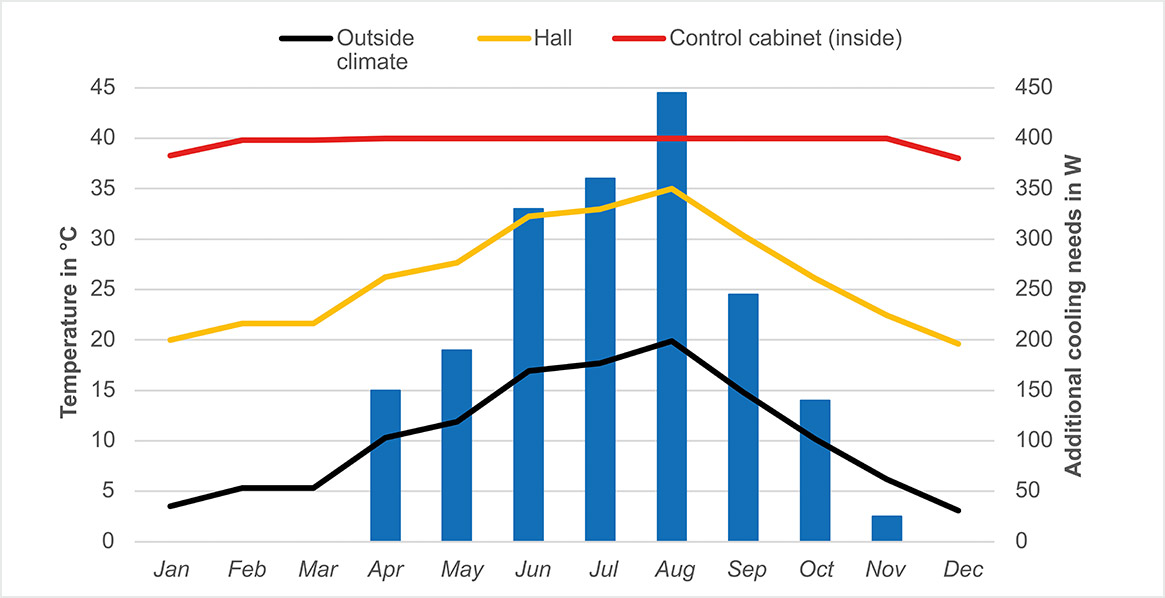
Optimized state (with AirBLOWER
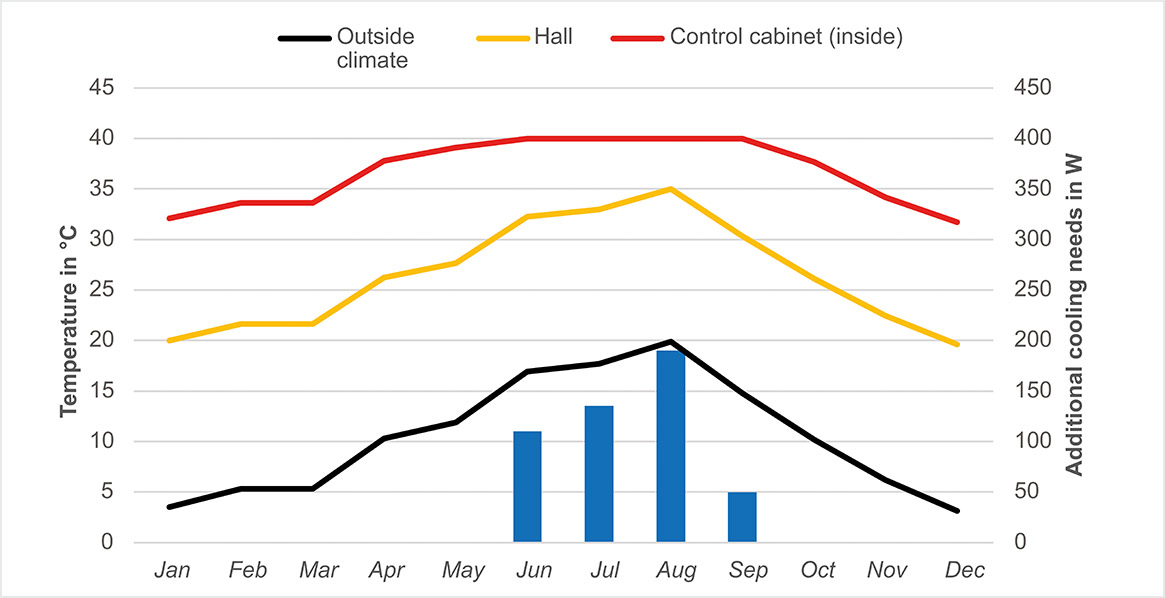
Figure 2 clearly shows the effects of a seasonal cooling concept. The potential energy and emission savings can be seen when the optimized state is compared to the non-optimized state. For instance, a 2-shift operation that runs on every workday in the year. A value of 2 is used for the Energy Efficiency Ratio (EER) when generating cold, i.e. 1 kWh of electricity is required per 2 kWh of cold. The annual power consumption for the non-optimized state is 557 kWh. The power consumption for the optimized state with an Airblower is 131 kWh. This corresponds to a reduction of 76 %. The additional fan output has already been taken into account. As the electricity used to generate the cold air comes from a power mix of fossil fuels, the CO2 savings potential for the examined variants can be determined. The actual emission reduction equates to 76 % under the assumed assumptions. If the German power mix for the year 2020 is used for the calculations, there is a reduction every year from 204 kg CO2 to 48 kg CO2. If the potential shown is scaled to an entire production plant with 200 such cabinet combinations, there would be a savings potential of over 85,000 kWh and 31 t CO2.
This calculation example shows how environmentally-friendly planning of control cabinets can lower operating costs and the amount of energy required for cooling the control cabinets without increasing the risk of a thermally-induced failure.
Authors:
Daniel Haag, M.Sc. (IGTE)
Wolfgang Heidemann, Engineer (IGTE)
Michael Bautz, Product Manager Cabinet, Friedrich Lütze GmbH
